A Vegemite Sandwich
I first became aware of the term “Vegemite sandwich,” as I’m sure many Americans my age did, due to the 1982 Men at Work hit song “Down Under.” More accurately, I became aware of it because of the video for the song.
Before continuing to talk about the sandwich itself, can we all take a moment to acknowledge the lifelong trauma inflicted on us by this video? Namely, by the “Vegemite sandwich” section itself, excerpted without audio here:
So what really happened in that scene? Let’s just for a moment take a closer look, shall we?
Frame 1: Colin Hay, the lead singer of Men at Work, holds a small white rectangle in his hand. It is recognizably a sandwich. He approaches the man from Brussels, who’s “Six foot four, and full of muscles,” though clearly this is a much shorter man, standing on a crate and wearing an unconvincing wig.
The man from Brussels smiles. There’s a look of mutual recognition. Frame 36: Colin Hay tosses the sandwich in his hand. It sails out of frame, forward, and to his left.
Frame 45: The artificially tall, artificially coiffed artificial Belgian is reaching down for an object. Is it a weapon? Colin Hay is clearly concerned. He jumps out of the way, back, and to the right.
Back, and to the right.
Frame 54; The Belgian madman stands up and reveals the item? What is it? It is roughly the size of a rugby ball, and superficially resembles the baby from Eraserhead, if it were covered in a brown gooey substance. Is this the Vegemite sandwich the man from Brussels intends to give Colin Hay?
This is not a sandwich. I’m unconvinced it’s an item of food at all. Frame 60: this is the key shot. The man in the wig callously serves this unholy bundle to Colin Hay, striking it and sending it across the room as if it were a volleyball.
 This is inconsistent with the treatment of either a weird alien baby or a food item, unless you are in Missouri and have ordered a “throwed roll.” Frankly, the entire situation is bizarre. This is the mystery that has haunted us for decades. Who is the man from Brussels? What is the mysterious object he is punting to this Man at Work? And why would Colin Hay have asked for such a thing in the first place?
This is inconsistent with the treatment of either a weird alien baby or a food item, unless you are in Missouri and have ordered a “throwed roll.” Frankly, the entire situation is bizarre. This is the mystery that has haunted us for decades. Who is the man from Brussels? What is the mysterious object he is punting to this Man at Work? And why would Colin Hay have asked for such a thing in the first place?
Vegemite vs Marmite
Vegemite, like Marmite, is “viscous, sticky, dark brown paste with a powerful and salty flavor that doesn’t inspire neutral reactions.” It was originally developed in Australia after World War I interrupted the supply of Marmite from England to Australia. It was not an immediate hit, and when Marmite began being distributed to Australia again, Vegemite did not sell well. After rebranding for a few years to the poor play on words Parwill–“If Marmite (ma might), Parwill (pa will)”–the original name Vegemite was restored. Campaigns involving giving Vegemite away with processed cheese and including it in World War II Australian soldiers’ ration packs eventually popularized the snack, and even made it into a patriotic symbol synonymous with Australia itself. Vegemite “tastes like Australia,” according to the ads, and “puts a rose in every cheek.”
If you’d asked me over the past several years which I preferred, I’d have told you Marmite. I may have had a hard time articulating why though. It has “more body,” I’d say, or I’d complain that Vegemite “only tastes like salt.” I had never tried the two head to head before this month though.
- The champion: Marmite
- The challenger: Vegemite
I started with a small amount of each, enough to cover the tip of a butter knife, along with a slice of buttered bread.
- Marmite
- Vegemite
Looking at the two side by side, it’s easy to begin to spot the differences. Marmite is lighter in color, brownish, while the Vegemite is quite dark and close to black. Texturally, the Marmite is softer as well, oozing off the edges of the knife while I took these photos, while the Vegemite maintained its shape.
- Marmite on bread
- Vegemite on bread
The textural difference is evident once they are spread on the bread as well. The Marmite more easily spreads evenly across the bread, while the Vegemite resists even spreading, manifesting clearly seen knifestrokes and a far more vivid contrast with the lighter colored butter.
The flavor is the thing though. The Marmite tastes much like a bouillon cube, salty with a pronounced umami effect, meaty without tasting like any meat in particular. The Vegemite, on the other hand, is a kick in the teeth. It may in fact be slightly less salty than the Marmite, but is more intense in general, bitter and burnt tasting. It doesn’t taste like anything encountered in nature–it tastes like Vegemite. It’s the kind of thing that people say “puts hair on your chest,” though the paste itself could probably be used to remove hair from one’s chest. It is, all at once, both repulsive and strangely addictive, much like Chicago’s infamous local liqueur Jeppson’s Malort.
https://youtu.be/tNMinoa9ILg
Somehow Marmite, which destroyed our palates 5 years ago while writing about the British Rail sandwich, which I called a problem back in 2017, seems tame by comparison to Vegemite now, the genteel Pom to Vegemite’s brash Bogan.
A Vegemite Sandwich (or several)
The problem with Marmite, I once said, is that every sandwich with Marmite in becomes a Marmite sandwich. This problem is compounded with Vegemite, vastly more intense and unique in flavor. How do Australians eat it? Numerous sites and videos on the internet bearing titles like “How to eat Vegemite like an American” show people spreading it thickly on bread, as if it were peanut butter or nutella, or worse, eating it by the spoonful straight out of the jar. Many of these videos then go on to explain that the point is to spread the Vegemite very thinly on bread, toasted or not, over a thicker layer of butter.
They don’t stop there though. Australians like to mix it up with their Vegemite. They might eat it with eggs, whether poached, scrambled, or fried.
- Vegemite with egg, sunny-side up
- Vegemite with egg, sunny-side up
Much like British HP sauce, the flavor of Vegemite is a natural combination with a gooey runny egg yolk. On several occasions recently I’ve added Vegemite to my standard breakfast of a fried egg on toast and found it quite satisfying.
It’s also common to eat Vegemite with cheese and onions. I tried it recently with some thinly sliced shallots
To this I added a slice of sharp Cheddar cheese
Then I broiled it just long enough to melt and brown the cheese.
This combination was reminiscent of a treat from my childhood that we called “Horsey doovers,” a deliberate mispronunciation of hors d’oeuvres. The horsey doovers of my childhood were made with even proportions of finely diced onion, parmesan cheese, and Miracle Whip, spread on cocktail rye bread and then broiled.
The Vegemite and cheddar here combine to provide a similarly savory punch, with the slightly less pungent shallots subbing well for the standard yellow onions. The sweetness of Miracle Whip is missing, but not really missed.
Taking a cue from our Australian correspondent Crit, I decided to make my own version of her healing “Sick-Person sandwich” from 2015. Starting with a piece of toast, I first rubbed some raw garlic onto the toast itself, as with Catalan Pa Amb Tomàquet. I then added some mashed avocado, thin slices of grape tomatoes, and a drizzle of yellow Sriracha sauce.
This was brilliant. Vegemite works even better with avocado than it does with egg, the fatty fruit providing yet another layer to dilute the intensity of the Vegemite. The tomato boosts the savory qualities of the Vegemite and the fruitiness of the avocado, naturally fitting in with the hit of raw garlic scraped onto the bread as well. The Sriracha adds a bit more garlic flavor, along with a bit of sweetness and the chili spice.
It’s a spectacular combination of flavors, and probably as close to an actual healthy use of Vegemite as we got this month.
Flying Too Close to the Sun
I’ve always got to try to get too fancy though. Sometimes it works. Other times I wash up on the beach in a spectacular heap of feathers and melted wax.
Turns out that in Malaysia, there’s a dish made with small pieces of chicken, battered and fried similarly to Har Cheong Gai, served over rice in a sauce made with either Marmite or Vegemite. It is called, accordingly, either Marmite Chicken or Vegemite Chicken.
Perhaps feeling overly buoyed by the success of my raw tuna laab banh mi last month, I naturally asked myself, can we sandwich it? The sticky glazed fried chicken itself might make for too one-note a sandwich, I thought, and looked for a type of Malaysian slaw or salad to add as a condiment. This “rojak pineapple salad” seemed tailor-made for my needs.
As with Har Cheong Gai, the chicken sits for a time in a mixture that acts both as a marinade and as an eventual batter. This mixture is made with soy sauce, oyster sauce, sesame oil, Shaoxing wine, garlic, ginger, white pepper, and cornstarch. I used an air fryer to cook the chicken–it’s my new kitchen gadget obsession.
I made the sauce with Vegemite, Demerara sugar, honey, soy sauce, and chicken stock. Normally, the chicken would cook in the sauce and the corn starch from the batter would help thicken the sauce, so I thickened it a bit with a corn starch slurry. It tastes like sweetened Vegemite, no surprise there.
I selected some good locally-baked Kaiser rolls for the base of this sandwich, crisped up in the oven for a few minutes before serving.
I added a thin layer of the pineapple salad to the bottom of the roll, thinking it would be better contained there than atop the chicken.
I then tossed one of the fried skinless boneless chicken thighs in the sauce and finished the sandwich with it.
The sandwich looked beautiful. I’d love to tell you it tasted as good as it looked. There is probably a good sandwich to be found here. This was not it though. The chicken was fantastic, juicy and crisp. The pineapple salad combined some of the flavors I love from Thai or Vietnamese cuisine–fish sauce, lime juice, cilantro and basil, even a bit of off-recipe mint that I added–with the sweetness of pineapple in a very appealing way.
The Vegemite sauce was just too overpowering. Perhaps I should have used Marmite instead, or cut down the amount of Vegemite. Perhaps I shouldn’t have thickened it quite so much, so that a thinner layer would have clung to the chicken. Perhaps I should have abandoned the idea entirely.
I’m glad I tried it though. I’ve got two jars each now of Vegemite and Marmite. I’ll have to find ways to use them. I’d love to hear about your favorite Vegemite sandwiches in the comments. Thanks!

I like sandwiches.
I like a lot of other things too but sandwiches are pretty great













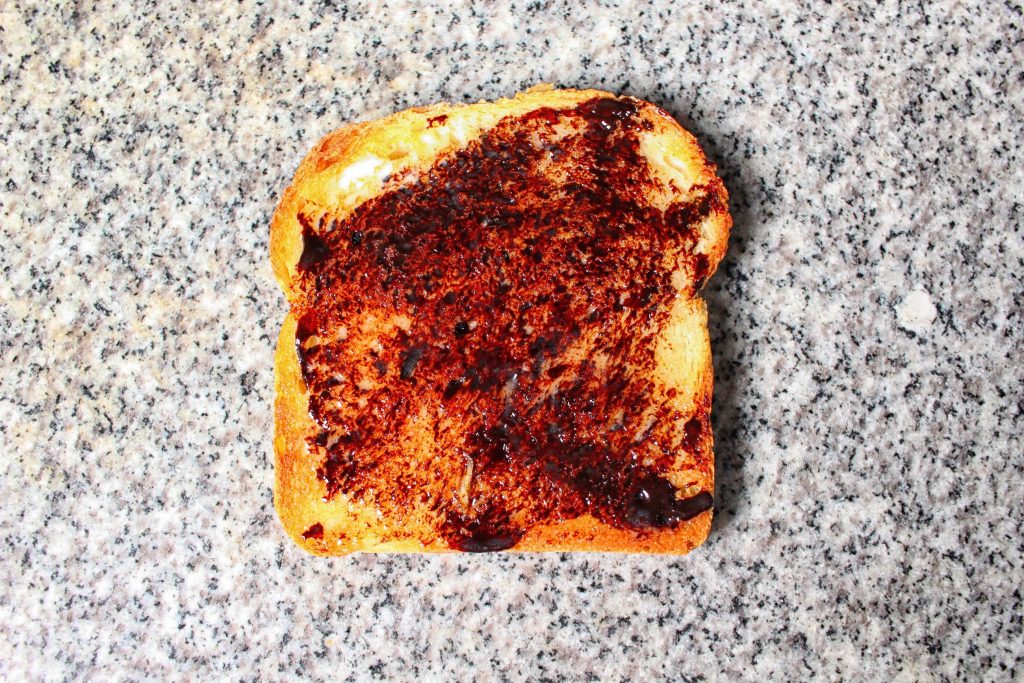


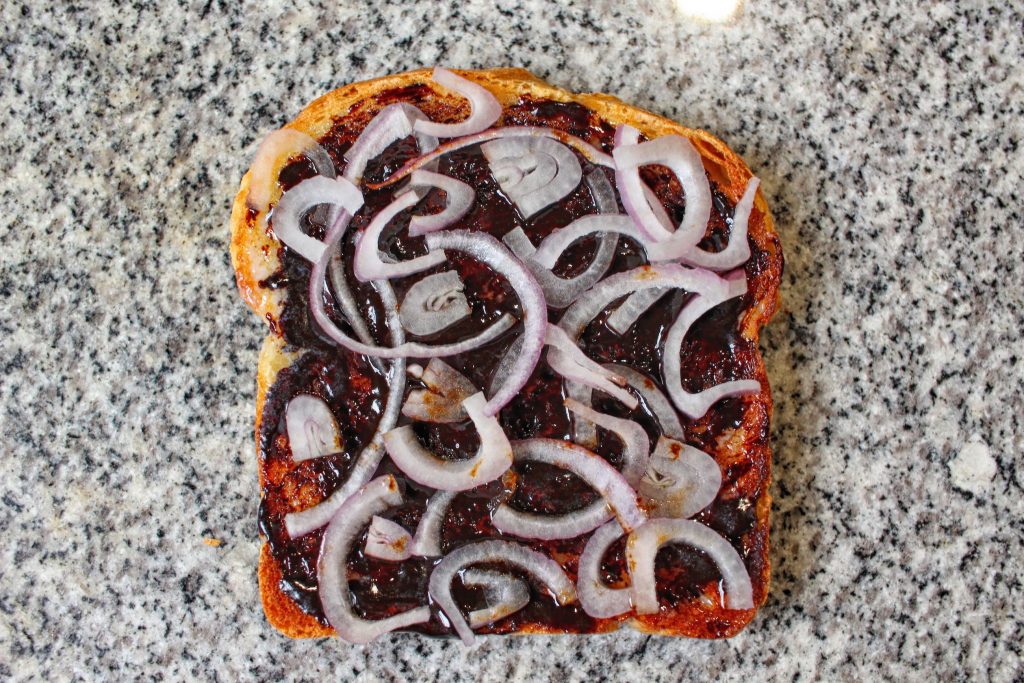
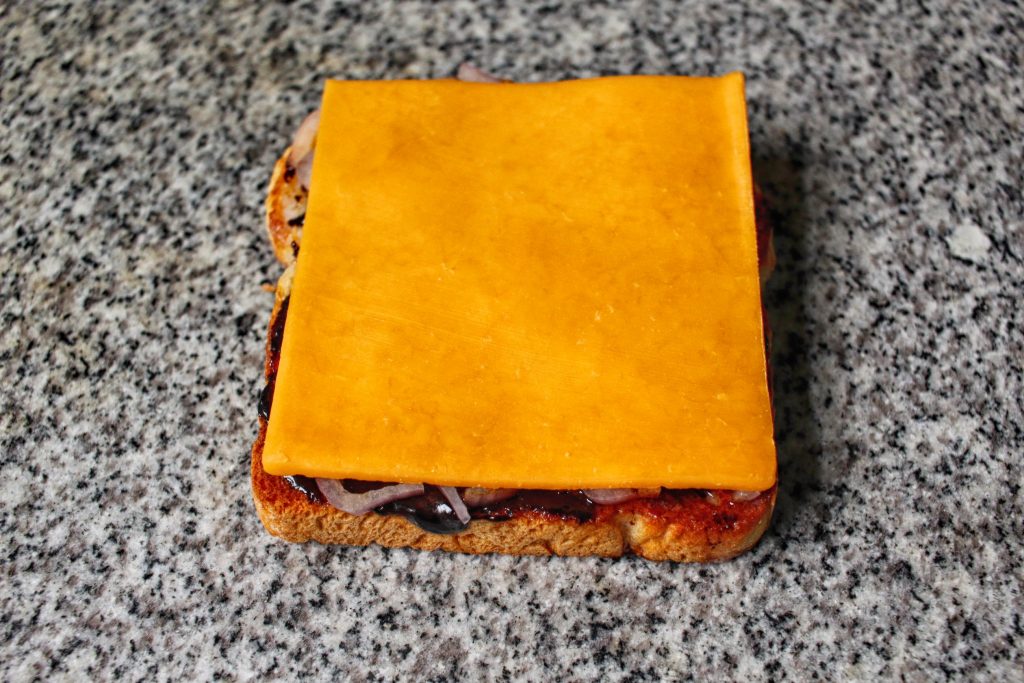
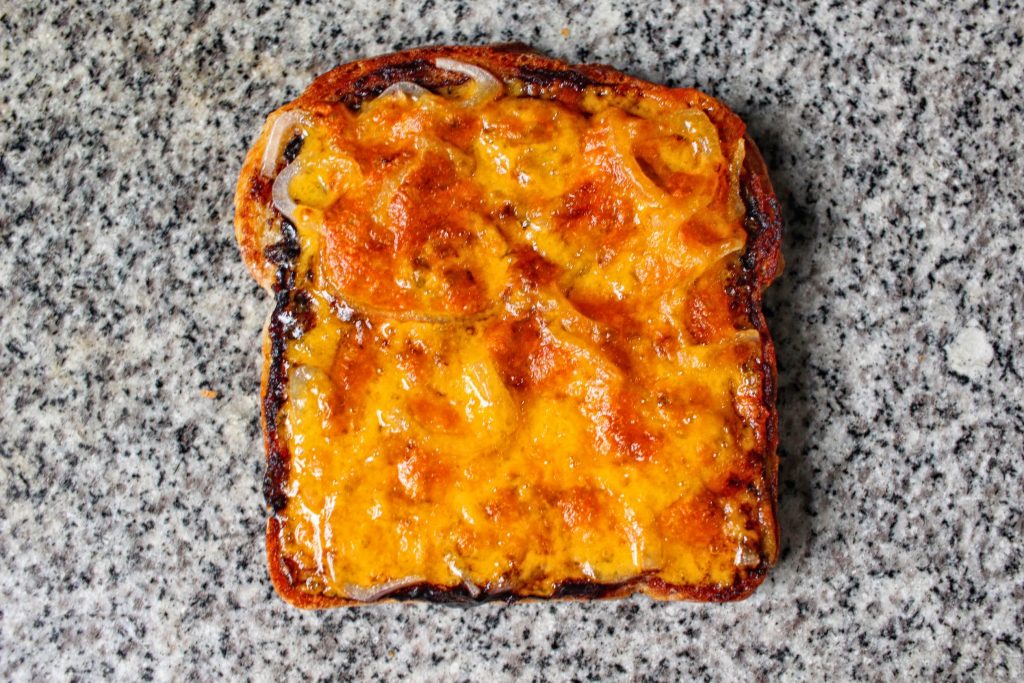
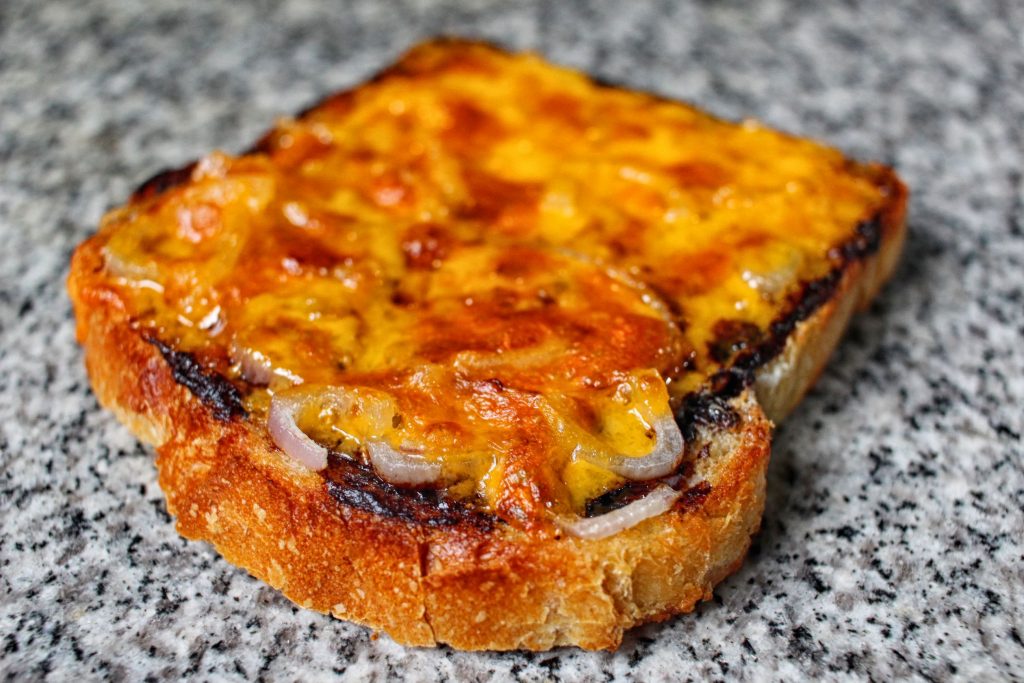
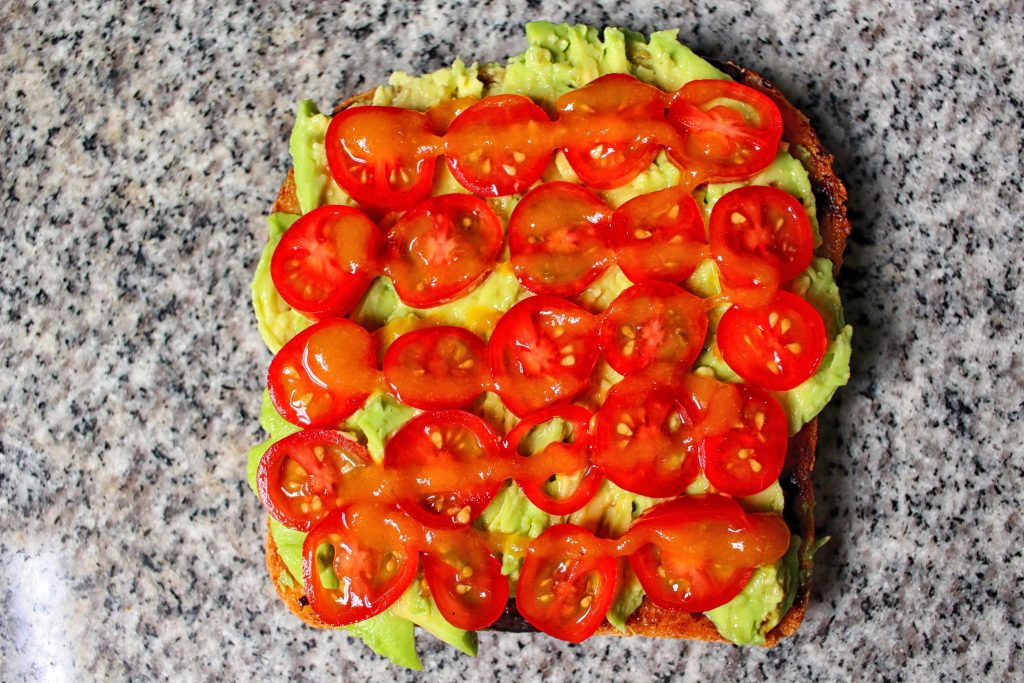
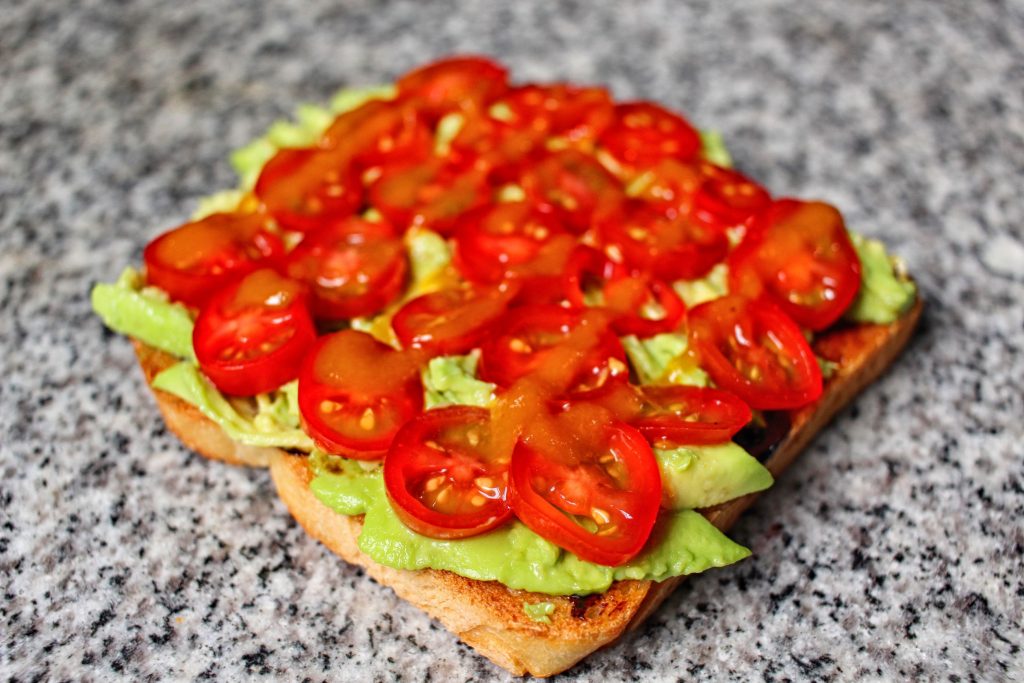
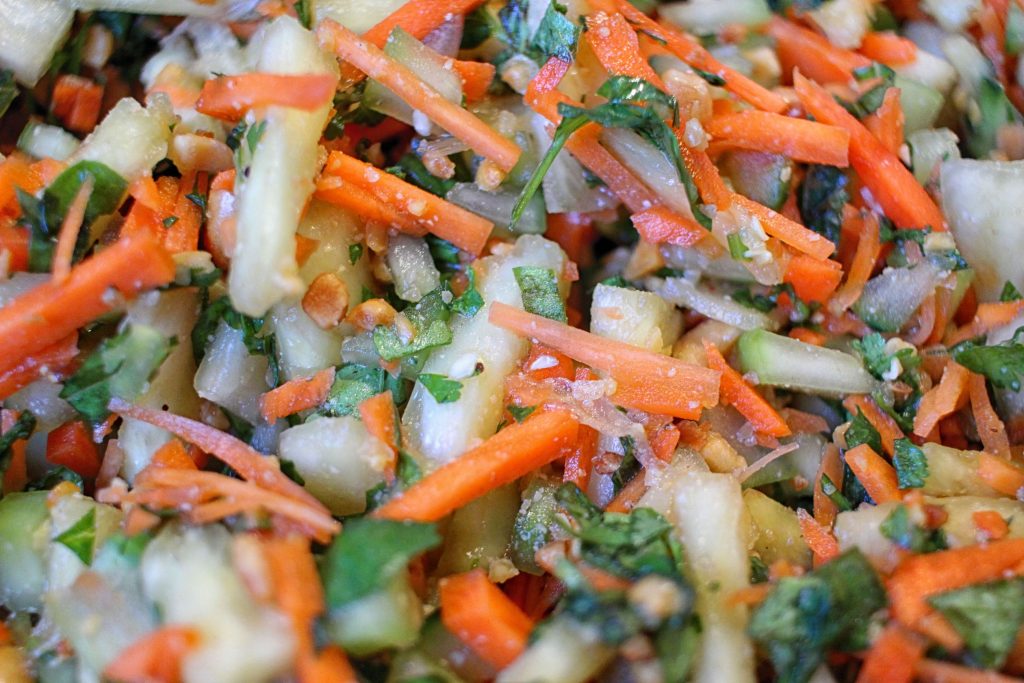
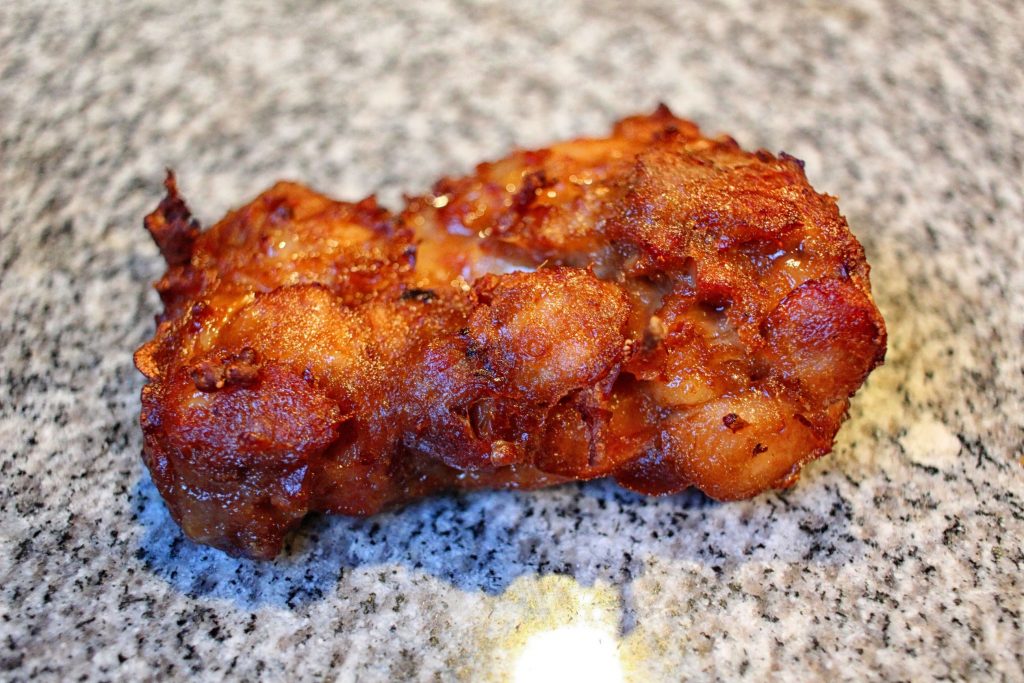
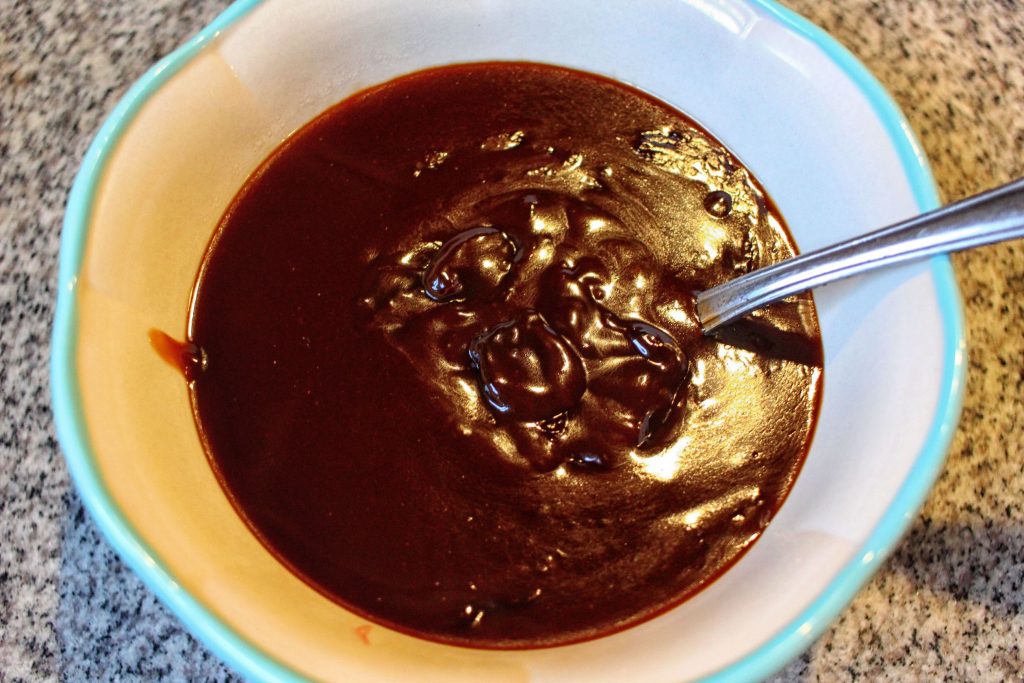
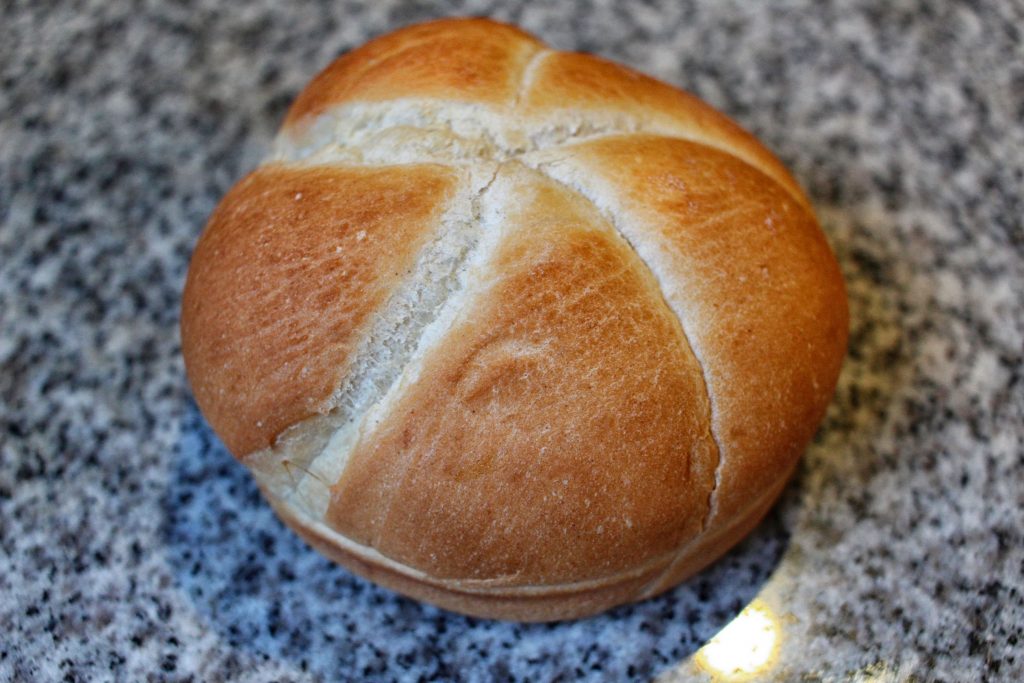
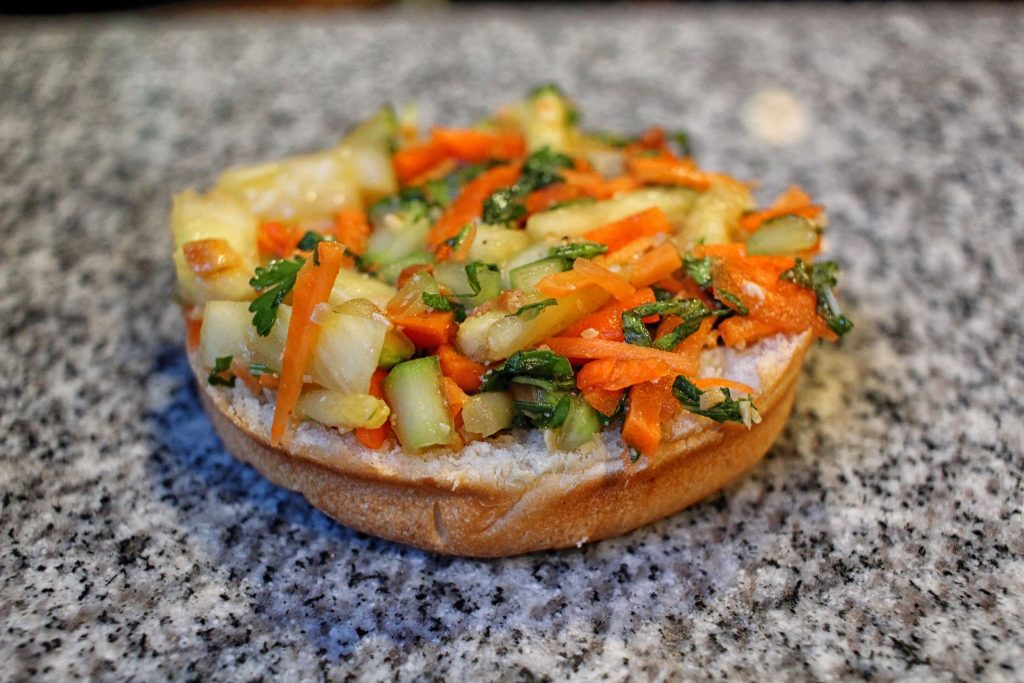
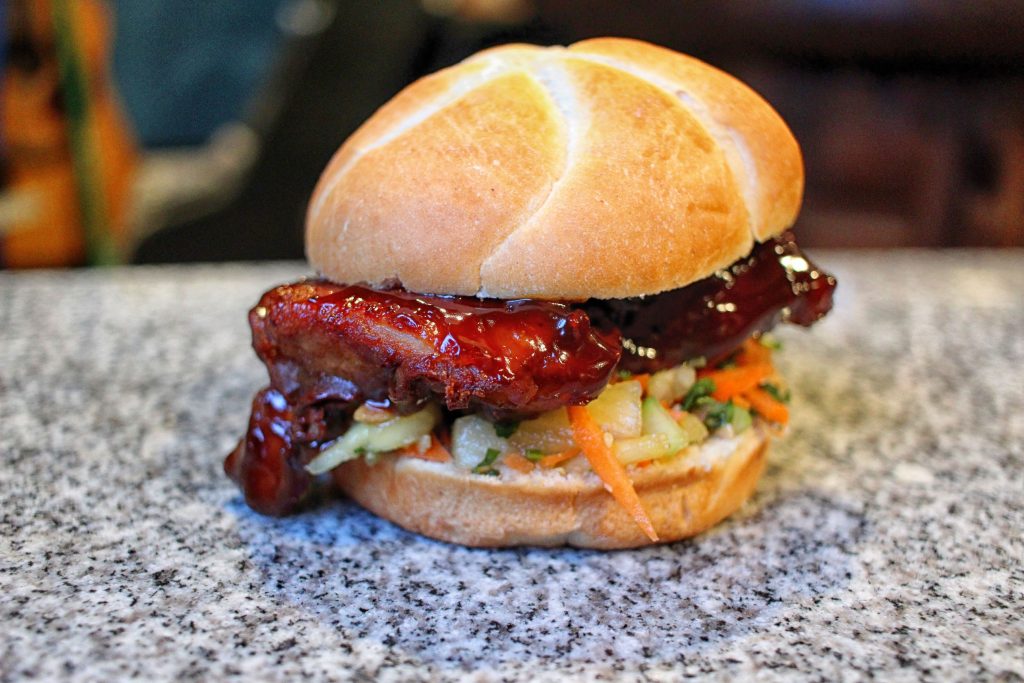









This is an awesome idea. I’m sorry it didn’t come out as you like. I’m going to have to try it though. Recently fell in love with Vegemite, so I’m looking at ways to make delicious pairings. Thanks!
The squeeze bottle Marmite is not the same as the OG kind in a jar, I think that might account for some of the differences you found. Marmite in jars is thicker and a deeper black-brown colour. I’ve never done a side by side comparison, however I think it has to be made more liquid, and therefore less concentrated, to be dispensed from a squeeze container.
Perhaps the squeezy container type is more easy to find outside the UK than the OG jars though?